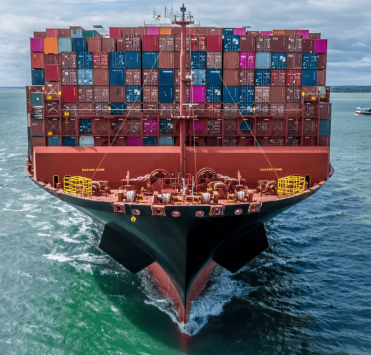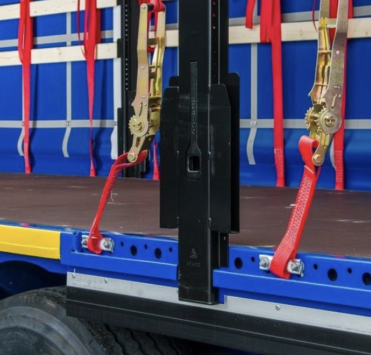Lorry dimensions - How to choose the right transportation, not to overpay for empty space
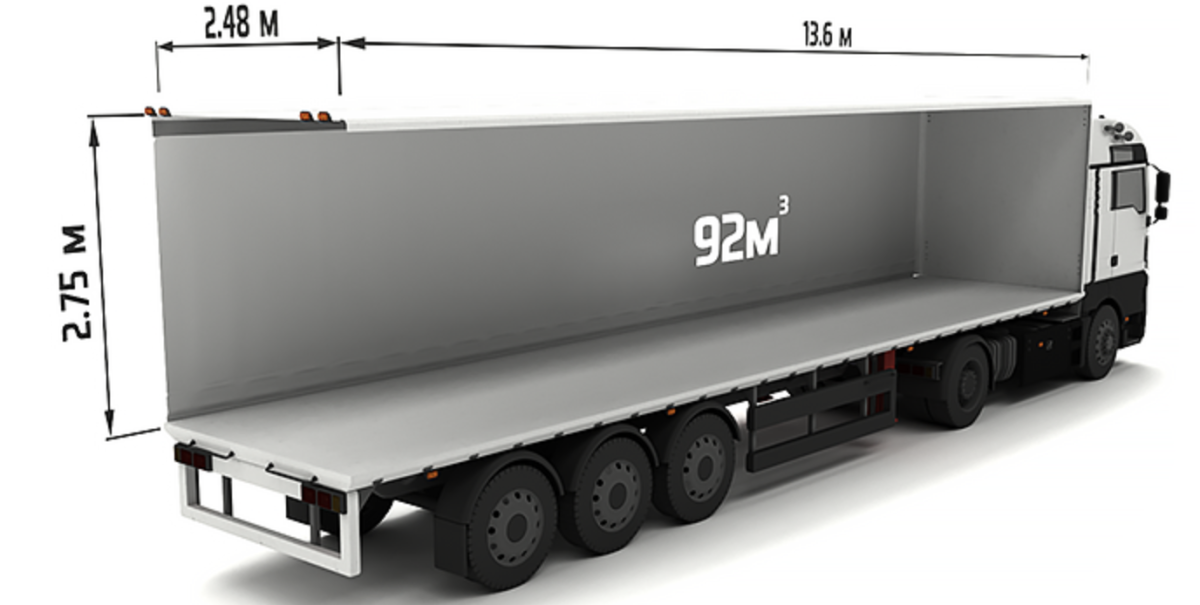
Trucks are the basis of modern commercial logistics. They transport the bulk of goods both domestically and in international transportation. Vehicles deliver raw materials to industrial enterprises, finished products to distribution warehouses, goods to retail chains. However, it is necessary to choose the right dimensions of the truck, because this determines the economic efficiency and safety of the entire supply chain.
A vehicle that is too small will not accommodate the entire shipment and will force you to make an additional trip. A vehicle that is too large will result in an unjustified overpayment for the "air" that you are transporting instead of the goods. Therefore, a deep understanding of the exact dimensions helps the business:
- practically build your logistics;
- optimize costs;
- avoid annoying planning mistakes.
Standard dimensions of a truck: what is a "Eurotruck"
In the professional environment of logistics and transportation, you can most often hear the term "Eurotruck". This is the accepted name for a standard road train consisting of a truck tractor and a semi-trailer. Its dimensions have been standardized for unimpeded movement along the road network of the European Union countries, which allows avoiding problems with driving under bridges and in tunnels.
The main dimensions of the Euro truck and the interior space of the semi-trailer:
- Semi-trailer length: 13.6 meters.
- Semi-trailer width: 2.45-2.48 meters. The width varies depending on the design of the sides, awning.
- Height of the semi-trailer: 2.65–2.75 meters.
- Useful volume: from 86 to 92 cubic meters.
The expression “20 tonne truck dimensions” refers to the useful load capacity. A standard tarpaulin truck is capable of transporting commercial cargo weighing from 20 to 22.5 tonnes. It is important to remember that the gross weight of a road train (tractor + semi-trailer + cargo) in most EU countries is limited to 40 tonnes, which determines the maximum weight of the cargo itself.
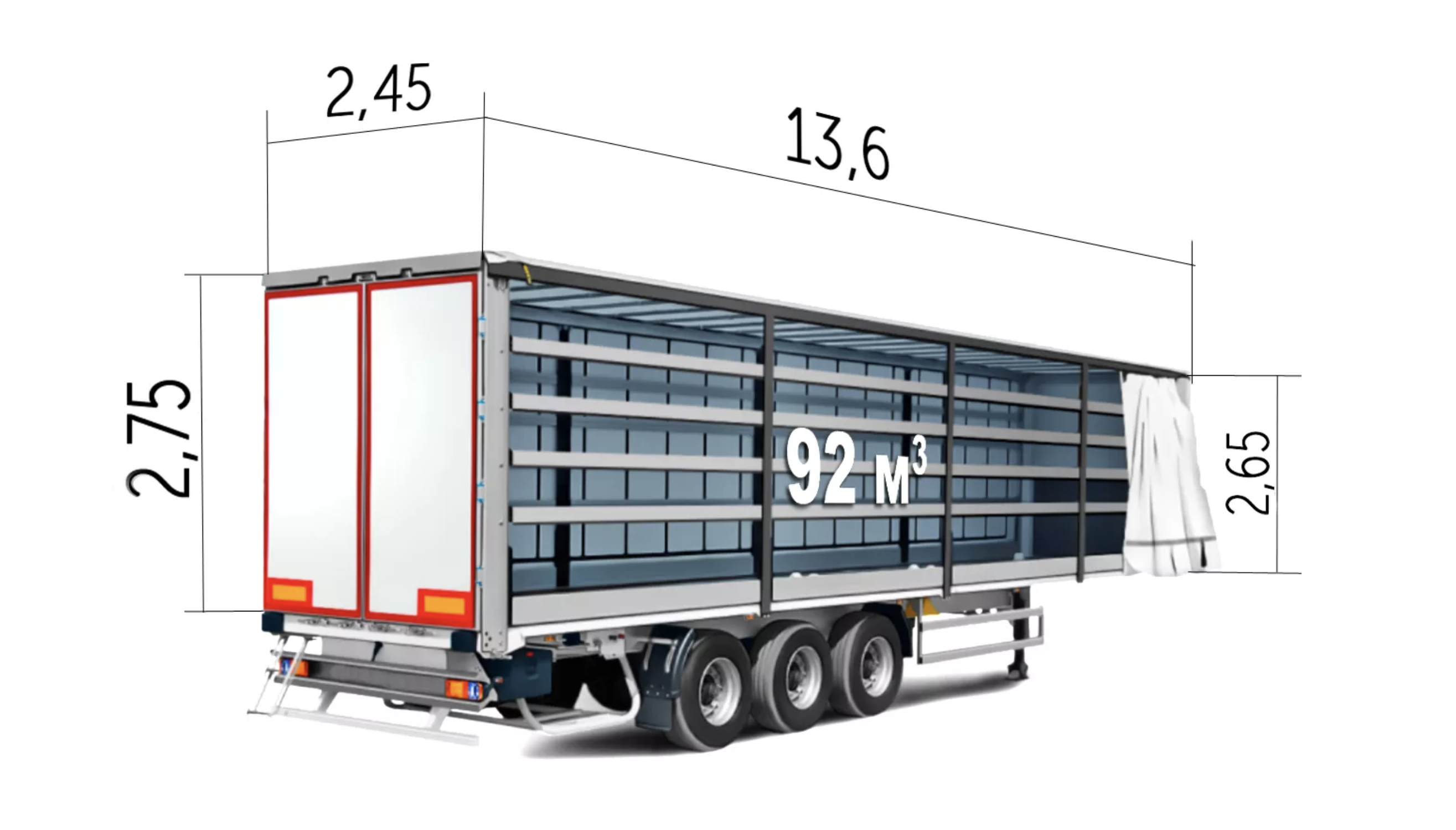
The practical meaning of these figures for business is capacity. A standard semi-trailer, when properly placed, can accommodate:
- 33 Euro pallets measuring 1200x800 mm, installed in one tier. They are placed in 3 rows across the width and 11 rows across the length.
- 26 standard pallets (also called FIN pallets or industrial pallets) measuring 1200x1000 mm. They are placed in 2 rows across the width.
Clear knowledge of how many pallets will fit in a truck allows the forwarder or cargo owner to accurately plan the loading, avoid situations when one or two pallets do not fit, requiring the ordering of a separate, expensive vehicle.
Types of trucks and differences in dimensions
In addition to standard Euro trucks, specialized sizes of cargo transport are used to transport different types of cargo. The choice depends on the characteristics of the goods and the requirements for their transportation.
Tent-covered trucks
The most versatile, common type of semi-trailers is cargo transportation with an awning. The advantage here is the flexibility of loading and unloading operations. You can load from the back (through the gate), from the side (sliding the side "curtain"), from above (sliding the roof). The frame is covered with a durable waterproof PVC awning, which reliably protects the cargo from precipitation, dust, road dirt.
- Tent-covered truck dimensions. The internal dimensions fully comply with the Euro truck standard (13.6 m length, 2.45 m width, 2.7 m height). Such transport is suitable for transporting a wide range of goods: goods on pallets, equipment in boxes, building materials, big bags, furniture.
Refrigerators
Specialized semi-trailers with an autonomous refrigeration and heating unit (KHU), capable of maintaining a set temperature in the range from -25°C to +25°C. They are used for refrigerated transportation of perishable products (meat, fish, dairy products), frozen foods, fresh vegetables, fruits, flowers, as well as pharmaceuticals, some chemical products.
- Dimensions. The internal dimensions are always slightly smaller than standard due to the thickness of the insulating sandwich panels required to maintain the temperature. The length is usually 13.3-13.4 m, the width 2.42-2.45 m, the height up to 2.65 m. The tonnage of the truck is also lower, about 20-21.5 tons, due to the significant weight of the refrigeration unit itself, the fuel for it.
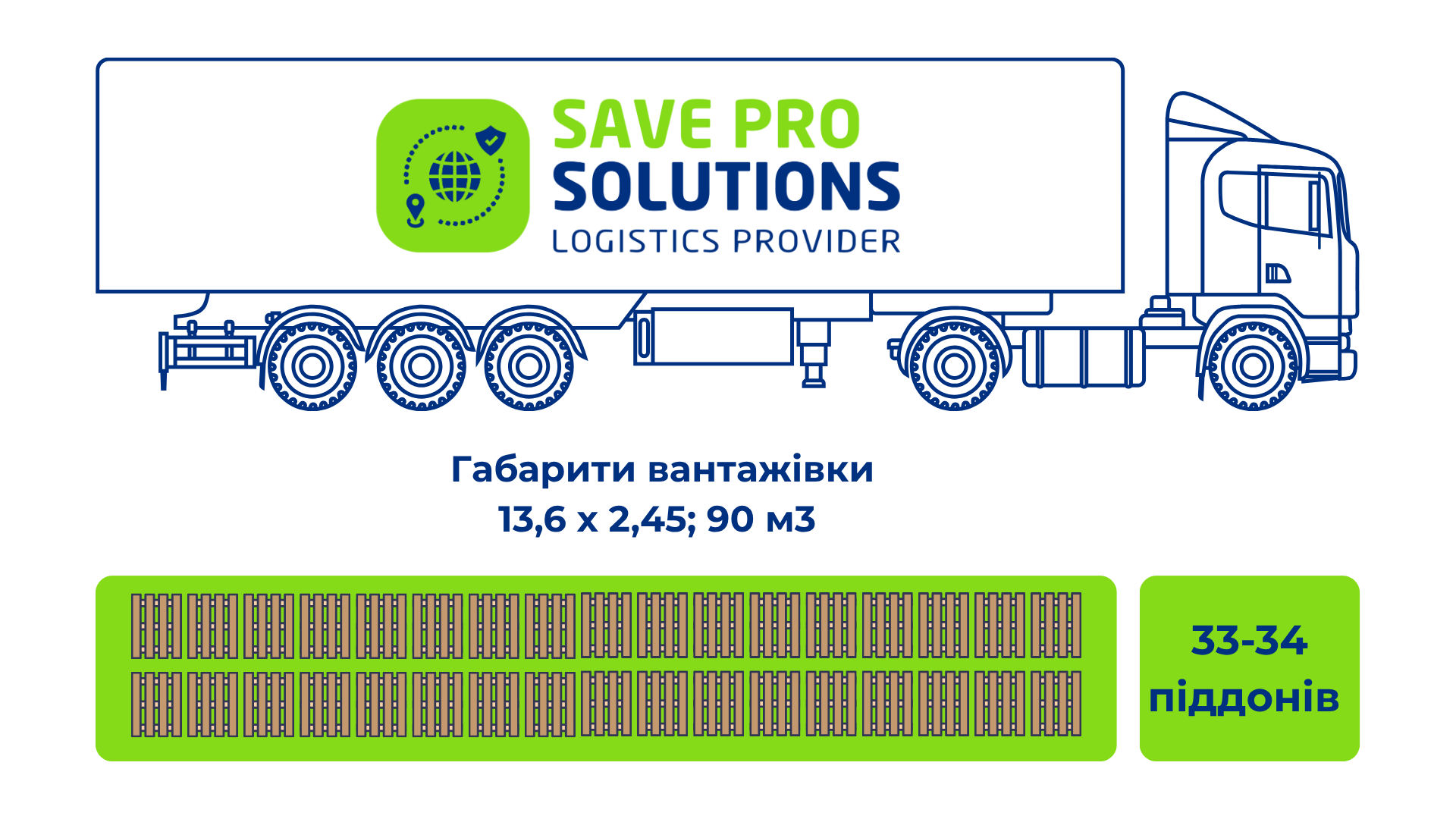
Mega-trucks, Jumbo
Specialized road trains designed to transport light but very bulky cargo. Their main difference is increased internal height, and, accordingly, greater useful volume.
- Mega. The internal height of the body reaches 3 meters. The useful volume is up to 100 m3. The load capacity remains standard, up to 22 tons. Such trucks are indispensable for transporting mineral wool, foam rubber, insulation, empty plastic containers.
- Jumbo or Hitch. Consists of a short semi-trailer, a full-size trailer. The total useful volume of such a road train can reach 115-120 m3. A characteristic feature is the L-shaped floor in the semi-trailer.
Isothermal vans
Semitrailers with a sealed body, working on the principle of a thermos. They do not generate cold, but only maintain the initial temperature of the cargo for a certain period of time (usually up to 1-2 days, depending on the outside temperature). Their walls are rigid, which provides better protection against mechanical damage and unauthorized access.
- Dimensions. Similar to refrigerators, the interior space is slightly smaller than a standard awning. Used to transport products that do not require strict temperature control, but are sensitive to temperature changes.
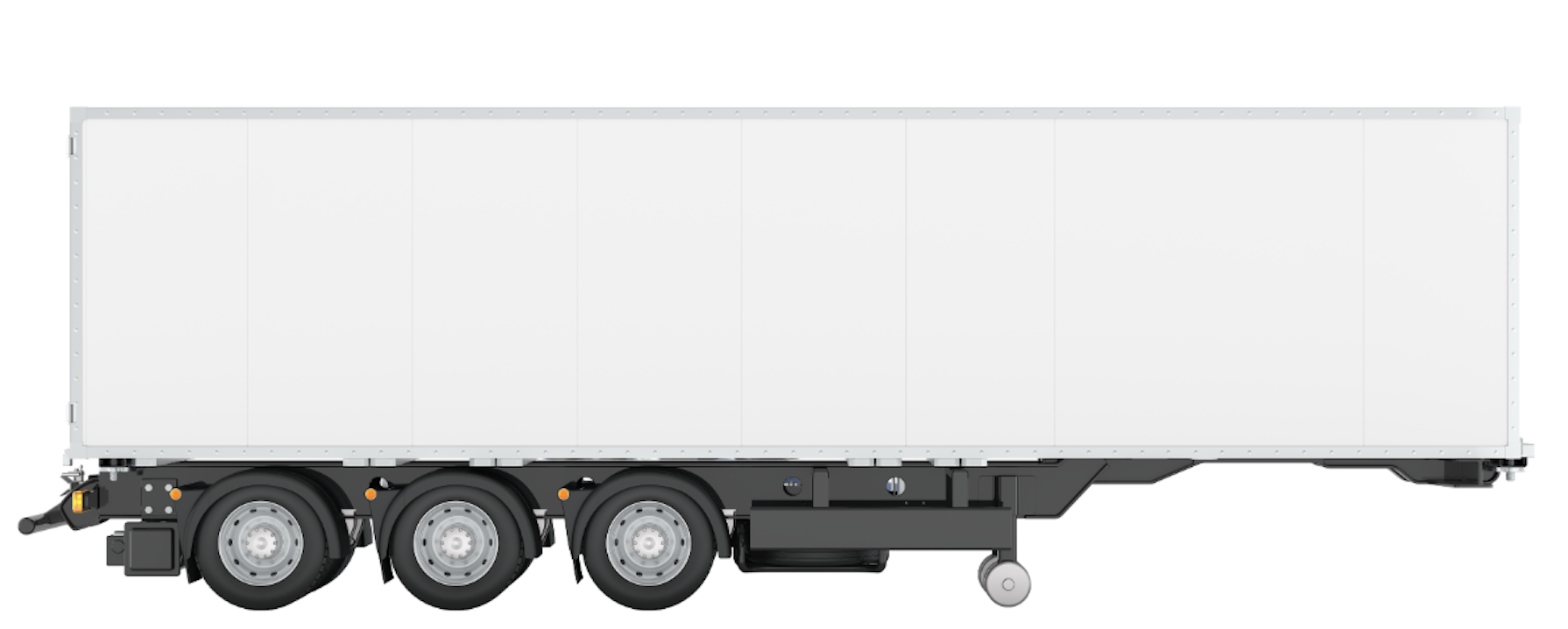
How to choose a truck for your cargo
The answer to the question of how to select a truck for a load always lies in the plane of analysis of four parameters of your goods. An error at this stage can lead to financial losses.
Nature of cargo
Does it require constant temperature control (refrigerated truck)? Is it classified as ADR hazardous cargo (specially equipped transport, driver with permission)? Is it sensitive to moisture, dust (awning or rigid van)?
Weight
If the weight of your shipment exceeds 22 tons, a standard Euro truck will not do. You must either split the shipment into two trucks or look for a carrier with permission to move with overload, which is expensive and not always possible.
Volume, dimensions
If you have light, bulky goods (for example, insulation or diapers), it is more profitable to order a Mega-truck to make the most of the volume, without overpaying for several standard vehicles. If the cargo is standard, heavy, on pallets, a regular Euro truck will do.
Method of loading, unloading
If the warehouse is loaded only by crane from above, you only need a tarpaulin with a sliding roof (type "curtain"). For side loading of long items by forklift, a "curtain" is also suitable. If loading is only from the rear ramp, any type of van can be used.
Our 12 years of experience in industrial transportation shows that a thorough analysis of these four points before ordering transport saves customers up to 15% of the logistics budget, eliminating many problems during the delivery process.
Having trouble choosing a vehicle based on the volume of cargo? Call or write to us. Our logistician will ask several clarifying questions about your cargo, after which he will be able to determine exactly what kind of vehicle is needed for your task, offering the most effective solution.




